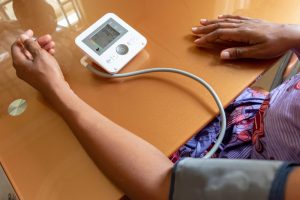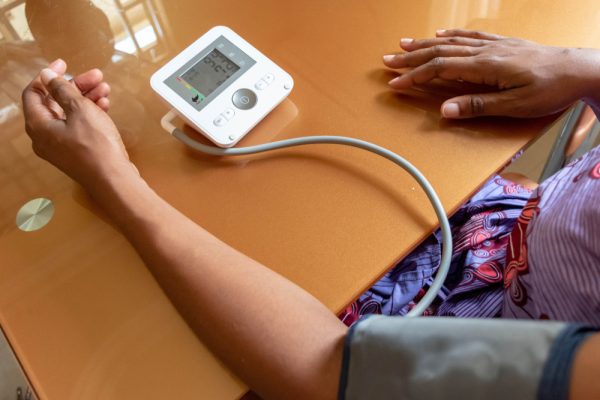 With many hospitals swamped with COVID-19 patients and fewer patients doing in-person check-ups, it’s more important than ever for people with hypertension to be able to monitor their own blood pressure at home.
With many hospitals swamped with COVID-19 patients and fewer patients doing in-person check-ups, it’s more important than ever for people with hypertension to be able to monitor their own blood pressure at home.
In addition, billing and coding guidelines in the field of hypertension are rapidly changing as the country’s health agencies adapt to the pandemic, with some major changes occurring as recently as July 1, 2020.
At our July 23 webinar on these issues, we were honored to host national experts from the American Medical Association. They discussed the latest thinking on Self-Measured Blood Pressure (SMBP) — a term for any blood pressure readings taken by a patient outside a clinical setting — and how clinical care teams can use SMBP with their patients. We also reviewed recent changes regarding reimbursement for SMBP-related services, national quality metrics reporting, and the AMA’s resources to help providers choose a validated home blood pressure measurement device.
WHO SHOULD WATCH THIS WEBINAR?
Anyone working with patients who have high blood pressure or are at risk of developing it.
AMA presentation: SLIDE DECK (.pdf)
Five Key Takeaways
-
- Self-measured blood pressure monitoring is a crucial tool to control hypertension. If uncontrolled, high blood pressure can lead to complications such as stroke, heart attacks, heart failure, metabolic syndrome, and dementia. A set of blood pressure readings taken at home gives a much more accurate picture than a single blood pressure reading at the doctor’s office. In addition, as Rakotz pointed out, it’s important to use out-of-office measuresments to confirm a suspected diagnosis of hypertension based on a reading taken in a medical setting. With this information, physicians can devise more effective interventions.
- To be effective, patients should do home blood pressure monitoring in conjunction with clinical support, such as telehealth counseling and treatment interventions. Research shows that home monitoring of blood pressure by itself does not help control hypertension. Education and counseling can be provided by physicians or other members of the care team, including nurses, care coordinators and pharmacists.
- Preparation and patient education are necessary for valid blood pressure measurements. For example, patients should empty their bladder and rest for five minutes before each reading (see chart on patients can obtain an accurate reading); they should also use monitoring devices validated for clincal accuracy.
- Providers must follow certain guidelines for home blood pressure monitoring in order to be reimbursed. The AMA has an invaluable seven-step guide that outlines the protocol for SMBP monitoring, which, among other things, should include a minimum of 12 separate measurements, taken twice daily over a 30-day period, using a device validated for clinical accuracy and an upper-arm cuff. The provider must then average the results, document them in the patients’ medical record, diagnose, and “initiate, continue or intensify treatment as needed.” As of January 2020, providers can use these codes (see table) to submit claims for SMBP services.
- HEDIS — the country’s most widely used quality improvement tool in health care — now accepts patients’ self-reported measures of blood pressure. This change, announced on July 1, 2020, is critical because more than 90 percent of managed care plans use HEDIS to collect data on physician performance; in addition, the National Committee on Quality Assurance (NCQA) collects HEDIS data on health plans covering 81 percent of all people with health insurance. This means that patients’ blood pressure measurements — whether scrolled to a provider over video during a telehealth visit or called in over the phone — will count toward HEDIS quality improvement reports in hypertension as well as financial rewards associated with higher HEDIS scores.
Presenter bios:
- Michael Rakotz, MD, FAHA, FAAFP. Rakotz is a family physician and Vice President of Improving Health Outcomes at the American Medical Association.
- Laken Barkowski, RN, BSN. Barkowski is a nurse and quality improvement specialist as Senior Program Manager with the Improving Health Outcomes team at the American Medical Association.
- Neha Sachdev, MD. Sachdev is a family medicine physician and Director of Health Systems Relationships in Improving Health Outcomes at the American Medical Association.
This webinar is from the Center for Care Innovation’s PHASE and TC3 programs and was done in partnership with Kaiser Permanente’s CVD Prevention program.
For more information:
- Berg, S. 6 Heart-Health Points to Drive Home With Patients. American Medical Association.
- 7-Step SMBP Quick Guide: Helping patients achieve and maintain blood pressure goals.
- SMBP Codes and Descriptions. What you need to know for billing purposes.
- Self-Measured Blood Pressure Cuff Selection. How to help choose a validated device and upper-arm cuff.
- Shimbo D, Artinian NT, Basile JN, Krakoff LR, Margolis KL, Rakotz MK, Wozniak G; on behalf of the American Heart Association and the American Medical Association. Self-measured blood pressure monitoring at home: a joint policy statement from the American Heart Association and American Medical Association. Circulation. 2020;141.
- Target: BP. Evidence-based tools from the AHA and AMA to help providers prevent hypertension, which is thought to affect half the adults in the United States.
Find this useful or interesting? We’re constantly sharing stuff like this. Sign up to receive our newsletter to stay in the loop.

